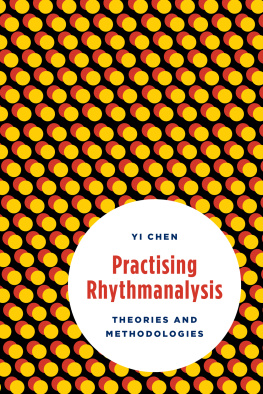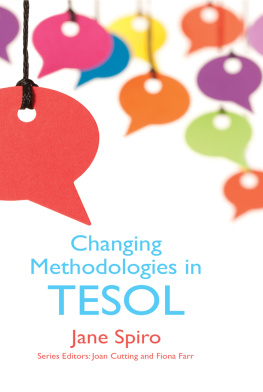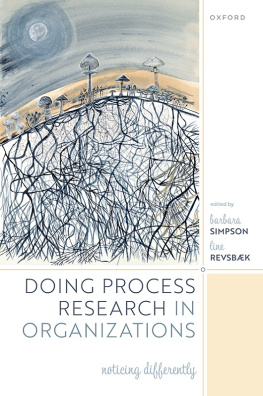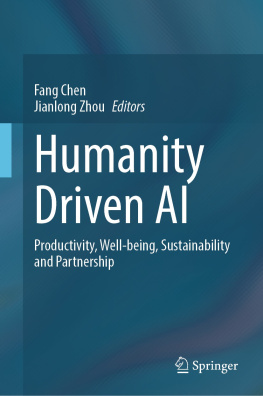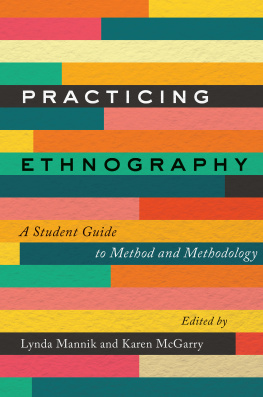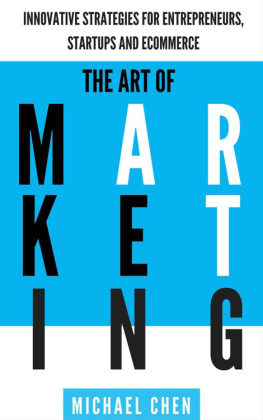Yi Chen - Practising Rhythmanalysis: Theories and Methodologies
Here you can read online Yi Chen - Practising Rhythmanalysis: Theories and Methodologies full text of the book (entire story) in english for free. Download pdf and epub, get meaning, cover and reviews about this ebook. year: 2016, publisher: Rowman & Littlefield, genre: Romance novel. Description of the work, (preface) as well as reviews are available. Best literature library LitArk.com created for fans of good reading and offers a wide selection of genres:
Romance novel
Science fiction
Adventure
Detective
Science
History
Home and family
Prose
Art
Politics
Computer
Non-fiction
Religion
Business
Children
Humor
Choose a favorite category and find really read worthwhile books. Enjoy immersion in the world of imagination, feel the emotions of the characters or learn something new for yourself, make an fascinating discovery.
- Book:Practising Rhythmanalysis: Theories and Methodologies
- Author:
- Publisher:Rowman & Littlefield
- Genre:
- Year:2016
- Rating:5 / 5
- Favourites:Add to favourites
- Your mark:
- 100
- 1
- 2
- 3
- 4
- 5
Practising Rhythmanalysis: Theories and Methodologies: summary, description and annotation
We offer to read an annotation, description, summary or preface (depends on what the author of the book "Practising Rhythmanalysis: Theories and Methodologies" wrote himself). If you haven't found the necessary information about the book — write in the comments, we will try to find it.
Yi Chen: author's other books
Who wrote Practising Rhythmanalysis: Theories and Methodologies? Find out the surname, the name of the author of the book and a list of all author's works by series.
Practising Rhythmanalysis: Theories and Methodologies — read online for free the complete book (whole text) full work
Below is the text of the book, divided by pages. System saving the place of the last page read, allows you to conveniently read the book "Practising Rhythmanalysis: Theories and Methodologies" online for free, without having to search again every time where you left off. Put a bookmark, and you can go to the page where you finished reading at any time.
Font size:
Interval:
Bookmark:
Practising Rhythmanalysis
Practising Rhythmanalysis
Theories and Methodologies
Yi Chen

London New York
Published by Rowman & Littlefield International Ltd.
Unit A, Whitacre Mews, 26-34 Stannary Street, London SE11 4AB
www.rowmaninternational.com
Rowman & Littlefield International Ltd. is an affiliate of Rowman & Littlefield
4501 Forbes Boulevard, Suite 200, Lanham, Maryland 20706, USA
With additional offices in Boulder, New York, Toronto (Canada), and Plymouth (UK)
www.rowman.com
Copyright 2018 by Yi Chen
All rights reserved . No part of this book may be reproduced in any form or by any electronic or mechanical means, including information storage and retrieval systems, without written permission from the publisher, except by a reviewer who may quote passages in a review.
British Library Cataloguing in Publication Data
A catalogue record for this book is available from the British Library
ISBN: HB 978-1-7834-8777-6
PB 978-1-7834-8778-3
Library of Congress Cataloging-in-Publication Data Available
Names: Chen, Yi, 1985- author.
Title: Practising rhythmanalysis : theories and methodologies / Yi Chen.
Description: London ; New York : Rowman & Littlefield International, Ltd, [2016] | Includes bibliographical references.
Identifiers: LCCN 2016036990 (print) | LCCN 2016044352 (ebook) | ISBN 9781783487776 (cloth : alk. paper) | ISBN 9781783487783 (pbk. : alk. paper) | ISBN 9781783487790 (Electronic)
Subjects: LCSH: Rhythm. | Methodology.
Classification: LCC BH301.R5 C44 2016 (print) | LCC BH301.R5 (ebook) | DDC 153.7/53dc23
LC record available at https://lccn.loc.gov/2016036990
 The paper used in this publication meets the minimum requirements of American National Standard for Information SciencesPermanence of Paper for Printed Library Materials, ANSI/NISO Z39.48-1992.
The paper used in this publication meets the minimum requirements of American National Standard for Information SciencesPermanence of Paper for Printed Library Materials, ANSI/NISO Z39.48-1992.
Printed in the United States of America
Contents
The genesis of this book is my doctorate thesis which was supervised by Professor Ben Highmore. My work is very much indebted to Ben for his generous support and rich repertoire of knowledge which influenced my ways of configuring inquiries as well as attending to discussions around these inquiries. His guidance had been illuminating and inspiring. My book is written under the influence of his gentle yet powerful approach to pursuing knowledge which seldom judges but one that raises curiosity and encourages bold intellectual spirits.
I would like to thank Les Back and Tim Edensor for their warm encouragement as well as advice on the focus and structure of the book.
As part of researching for this project, I approached the British filmmaker William Raban who has been incredibly generous in sharing his works and ideas with me. My thanks go to him for vividly presenting me with an exciting period of filmmaking in post-war British cultural history.
I am grateful for the support I received from Rowman & Littlefield, in particular, Martina OSullivan who commissioned this book and offered me useful and practical advice on the journey of publication. Also to Fiona Gannon, for whom I have deep gratitude for her immaculate copyediting work which enhanced the clarity and precision of my book.
Lastly, to my family, my husband Jacob, our daughter Frieda and my mother Mei, whose care, patience and love weaved into the rhythms of my writing and thinking.
This book explores rhythmanalysis as a philosophy as well as a methodology that posits practical consequences for the study of cultural experiences. In his final book Rhythmanalysis , the French philosopher Henri Lefebvre moves beyond the paradigm of a Marxist critique of capitalist societies. From painstakingly describing the ebb and flow of a street in Paris, to configuring Mediterranean cities as an exemplar of urban rhythms, to reflecting on metaphysical issues such as those addressed by materialist philosophy, he sets up somewhat loose and lyrical discussions on rhythm and how rhythmanalysis work towards a heightening of lived experience (an essential step into exploring all possibilities of life). The concept of rhythm characterises forms of experience in their temporal-spatial ordering. Lefebvres theorisation of rhythm draws upon the fields of the biological, sociological and psychological and he demonstrates the pervasive nature of rhythms as organising principles that underlie all spheres of experience. The focus on rhythm, or rather the enactment of rhythms which are materialised in the interactions of social agents that is, to perceive rhythmic enactments as interrelating the world of things both in their cause and effect is just as much the study of concrete phenomena (such as that of bodily rhythms, institutional rhythms, communication rhythms, intellectual rhythms and so on), as it is the development of rhythm into a new field of knowledge: rhythmanalysis. Lefebvre set out to theorise the method through a wide range of discussions. One does get a strong impression that Lefebvres thinking on rhythm and rhythmanalysis is far from closed, or finalised, and so this instinct of mine became the impetus for this book. Perhaps some sentences were stopped short because the philosopher chose not to explain, to announce or to judge, yet the book is laden with rich ideas and at times the style of writing served well to incite curiosities and receptiveness about social phenomena. It is a field of inquiry that reserves much space for imagination and expansion.
Inspired by Lefebvre, as well as other writers who do not elaborate on the theme to the same extent (or whose works are not stamped as rhythmanalytical) but who nevertheless share similar cultural attentions, this book seeks to extend existing theories of rhythmanalysis and to provide alternative angles for understanding its philosophical orientations. It also has the ambition to posit rhythmanalysis as a research methodology that roams across academic disciplines such as cultural studies, historiography and visual culture. As being part of an emergent field of work that is reflexive of the reciprocal configurations of problems and methodology (Lury and Wakeford 2012, Vannini 2015, Les and Purwar 2013), I side with their inklings on the uniformity of methodological applications. For instance, as Lury and Wakeford succinctly propose that the inventiveness of methods is to be found in the relation between two moments: the addressing of the method... and the capacity of what emerges in the use of that method to change the problem (Lury and Wakeford 2012). I address rhythmanalysis as a method (or methods as it may operate differently for different problems) for it embodies styles and modalities of questioning and configuring problems. The ways in which rhythmanalysis may be put to work make it a unique prism for cultural analysis.
Sensing Rhythms, Rhythms as Meta-Sense
The concept of rhythm is grasped at the level of the sensory. While there are conventional ways of categorising perceptual mechanisms, such as the visual, the auditory or the haptic, rhythm is a meta-sense which synthesises bodily and extra-bodily impressions. In other words, rhythm as a sensorium, suggests a synesthesia whereby sensations of identifiable and non-identifiable sources come into play. Analysis of such experience invites us to create new ways of enunciating the implicit and the contagious transmission of the sensory. It is a focus that complicates accounts of sensual experience; such that heat, humidity, light and other affective responses come to shape senses of rhythm. It is a mode of sensing which may register at the level of non-consciousness, that is to say, there are perhaps no immediately identifiable objects that correspond to senses of rhythms (unlike sight and sound that trigger visual and auditory response, for instance). Rhythm as a meta-sense or a mode of meta-sensing invites the construction of new vocabularies (words, terms and phraseology) that tap into those forms of feeling which are periphery but work in subtle ways. Current discussions on concepts such as mood, atmosphere and affect are akin to the rhythmanalytical mode of exploring the senses. Rhythmanalysis supplies nuanced descriptions of sensual experience which often go beyond identification. Examples of how senses are accounted for include attending to the degrees and intensities of sensing (a Deleuzian notion), to the iterative and transformative processes of sensing, and to the assemblages of materialities that have the capacity to generate senses of rhythms. Rhythmanalysis is foremost a materialist philosophy that creates certain dispositions of configuring subjects, the locus of action and social agents, in ways that radicalise debates of identity politics which takes the subject as pregiven and autonomous. In the optic of rhythmanalysis, the method of identification is to find assemblages of rhythms that have the capacity to make vivid the sensing of rhythms through a process of materialising the sensory.
Next pageFont size:
Interval:
Bookmark:
Similar books «Practising Rhythmanalysis: Theories and Methodologies»
Look at similar books to Practising Rhythmanalysis: Theories and Methodologies. We have selected literature similar in name and meaning in the hope of providing readers with more options to find new, interesting, not yet read works.
Discussion, reviews of the book Practising Rhythmanalysis: Theories and Methodologies and just readers' own opinions. Leave your comments, write what you think about the work, its meaning or the main characters. Specify what exactly you liked and what you didn't like, and why you think so.

